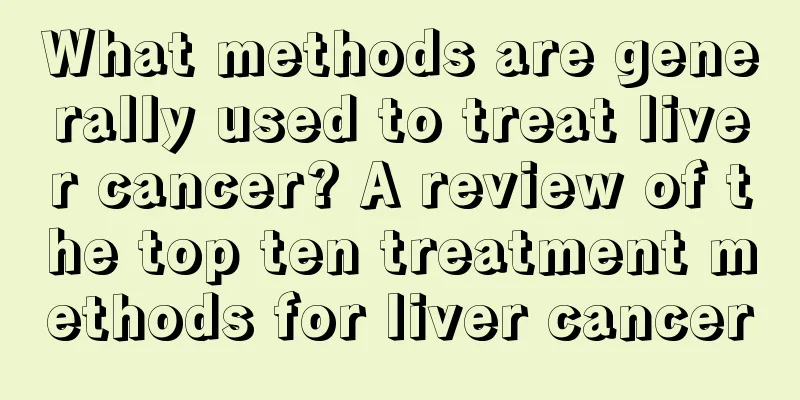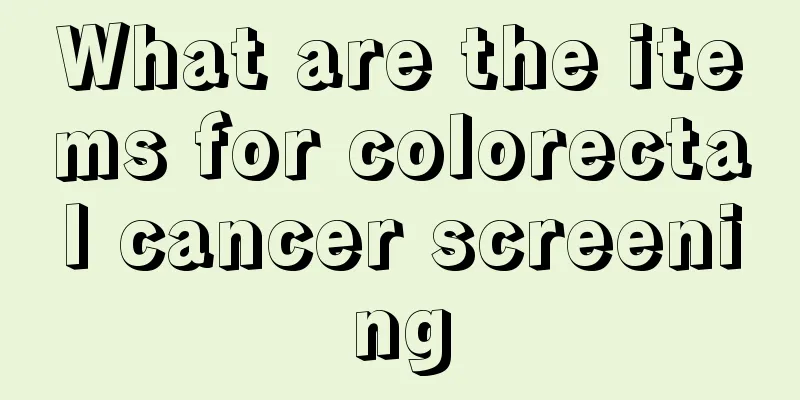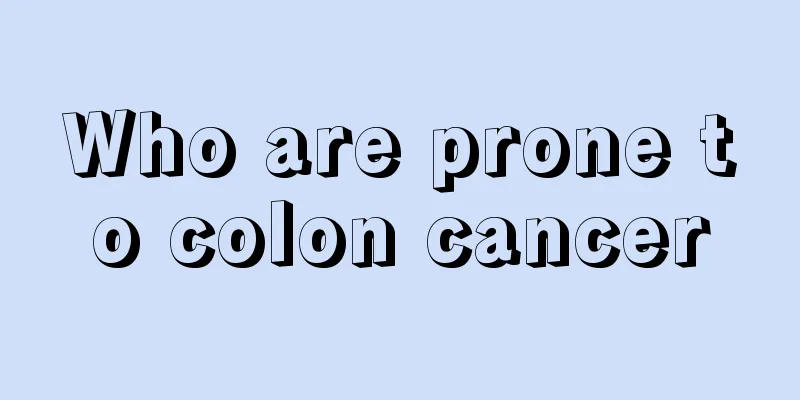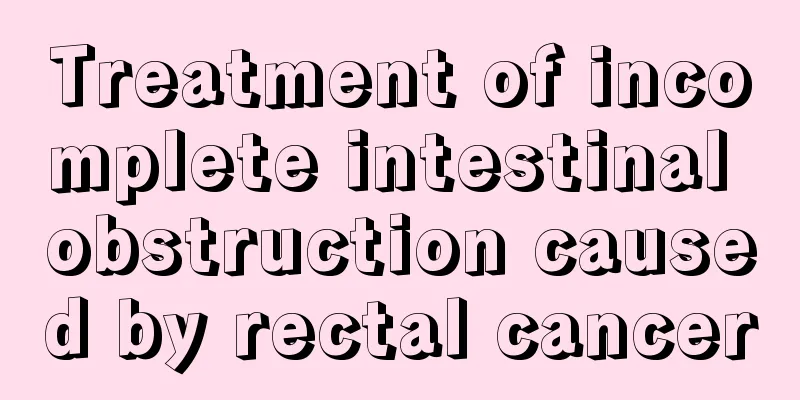What methods are generally used to treat liver cancer? A review of the top ten treatment methods for liver cancer

|
1. Surgical treatment Surgical resection is still the first choice for the treatment of liver cancer. Early resection is the key to improving survival rate. The smaller the tumor, the higher the five-year survival rate. The indications for surgery are: ① The diagnosis is clear and the lesion is estimated to be limited to one lobe or half of the liver; ② No obvious jaundice, ascites or distant metastasis; ③ Those whose liver function is well compensated and whose thrombin time is not less than 50%; ④ Patients with heart, liver, and kidney function tolerance. For patients with normal liver function, the amount of liver resection should not exceed 70%; for patients with moderate cirrhosis, the amount should not exceed 50%, or only the left hemihepatectomy can be performed; for patients with severe cirrhosis, liver lobectomy cannot be performed. Surgery and pathology have confirmed that more than 80% of liver cancer is complicated by cirrhosis. It is generally recognized that local resection instead of regular liver lobectomy has the same effect, and the liver function disorder is alleviated after surgery, and the surgical mortality rate is also reduced. Since radical resection still has a high recurrence rate, it is advisable to regularly check AFp and ultrasound imaging after surgery to monitor recurrence. Due to the close follow-up after radical resection, small liver cancers that recur in the "subclinical stage" are often detected, so reoperation is the first choice. The five-year survival rate after the second operation can still reach 38.7%. Although liver transplantation is a method for treating liver cancer and there are many reports abroad, its status in the treatment of liver cancer has not been confirmed for a long time. The long-term use of immunosuppressants after surgery often causes patients to die from recurrence. For developing countries, it is still difficult to promote it in recent years due to the source of donors and cost issues. 2. Palliative surgical treatment For larger tumors or those that are scattered or close to large blood vessels, or those that are difficult to resect due to liver cirrhosis, methods include hepatic artery ligation and/or hepatic artery catheterization chemotherapy, cryosurgery, laser therapy, microwave therapy, intraoperative hepatic artery embolization therapy or intratumoral injection of anhydrous alcohol, etc., which can sometimes shrink the tumor and reduce serum AFp, providing an opportunity for a second-step resection. 3. Multimodal comprehensive treatment It is an active and effective treatment method for large liver cancer in the middle stage in recent years, which sometimes transforms large liver cancer that cannot be removed into a small liver cancer that can be removed. There are many methods, generally based on the dual method of hepatic artery ligation and hepatic artery catheterization chemotherapy, plus external radiation therapy for triple therapy, such as combined immunotherapy quadruple therapy. The effect is best with triple therapy or above. After multi-modal comprehensive treatment, the tumor reduction rate of patients reached 31%. Due to the significant reduction of the tumor, two-step resection was obtained, and the two-step resection rate reached 38.1%. The Liver Cancer Research Institute of Shanghai Medical University has also studied hyperfractionated radiotherapy and guided therapy. The method of combined treatment of hyperfractionated external radiation and hepatic artery catheterization chemotherapy is: in the first week, intraductal chemotherapy of hepatic artery cisplatin (CDDp) was 20 mg per day for 3 consecutive days. In the second week, local external radiation of the liver tumor area was 2.5 Gy (250 rads) in the morning and afternoon for 3 consecutive days; two weeks is a course of treatment, and it can be repeated 3 to 4 courses every other week. Guided treatment, 131I-anti-liver cancer ferritin antibody or anti-liver cancer monoclonal antibody or 131I-lipiodol is injected into the hepatic artery catheter every 1 to 2 months, and CDDp 20mg is injected into the artery once a day during the treatment interval for 3 to 5 consecutive days. It is better if the above treatment is combined with immunotherapy such as interferon, lentinan, interleukin-2, etc. 4. Transarterial chemoembolization (TAE) This is a non-surgical tumor treatment method developed in the 1980s. It has a good effect on liver cancer and is even recommended as the first choice among non-surgical treatments. It is often used to embolize the distal blood supply of the tumor with iodized oil (lipiodol) mixed with chemotherapy drugs or 131I or 125I-lipiodol, or 90 yttrium microspheres, and then use gelatin sponge to embolize the proximal hepatic artery of the tumor, making it difficult to establish collateral circulation, resulting in ischemic necrosis of the tumor lesion. Chemotherapy drugs commonly used are CDDp80~, plus 100mg5Fu1000mg mitomycin 10mg [or doxorubicin (ADM) 40~60mg], first intra-arterial infusion, and then mixed with mitomycin (MMC) 10mg in ultrasonic emulsified Lipiodol for distal hepatic artery embolization. Hepatic artery embolization chemotherapy should be repeated for multiple times for better results. According to the data from the Department of Radiology of our hospital, among 345 patients with large liver cancer that could not be surgically removed, the one-year survival rate of hepatic artery infusion chemotherapy alone was only 11.1%, while the one-year survival rate of combined hepatic artery embolization therapy increased to 65.2%, with the longest follow-up survival of 52 months. 30 patients had tumor shrinkage and were given the opportunity for surgical resection. This method is contraindicated for patients with severe liver decompensation, and is also not suitable for patients with portal vein thrombosis. 5. Intratumoral injection of anhydrous alcohol Ultrasound-guided percutaneous hepatic puncture and injection of anhydrous alcohol into the tumor are used to treat liver cancer. The first choice is for patients with tumor diameter ≤3cm, nodules less than 3, and liver cancer with cirrhosis that cannot be operated on. Small liver cancers may be cured. Patients with ≥5cm have poor results. 6. Radiotherapy Due to the progress of radiation sources, radiation equipment and technology, the accurate positioning of various imaging examinations has improved the status of radiotherapy in the treatment of liver cancer and the efficacy has also been improved. Radiotherapy is suitable for liver cancer that is still localized and cannot be removed. Usually, if a larger dose can be tolerated, its efficacy is also good. External radiotherapy has undergone whole liver radiation, local radiation, whole liver moving strip radiation, local hyperfractionated radiation, and stereoscopic radiation. The total amount exceeds that of protons used for liver cancer radiotherapy. It has been reported that the total amount of radiation exceeds 40Gy (4000rads volume) combined with traditional Chinese medicine for regulating qi and strengthening the spleen can achieve a one-year survival rate of 72.7% and a five-year survival rate of 10%. Combined treatment with surgery and chemotherapy can kill residual cancer, and chemotherapy can also assist radiotherapy to sensitize. Intrahepatic artery injection of Y-90 microspheres, 131I-iodized oil, or isotope-labeled monoclonal antibodies can play an internal radiotherapy role. 7. Guided treatment One of the promising therapies is to use specific antibodies and monoclonal antibodies or tumor-affecting chemical drugs as carriers, label radionuclides or cross-link with chemotherapy drugs or immunotoxins for specific guided therapy. Antibodies that have been used clinically include anti-human liver cancer protein antibodies, anti-human liver cancer monoclonal antibodies, and anti-alpha-fetoprotein monoclonal antibodies. In addition to 131I125I, 90Y has been tried as a "warhead". In addition, cross-linking of toxin proteins and chemotherapy drugs with antibodies, humanized monoclonal antibodies or genetically engineered antibodies, are under study. 8. Chemotherapy CDD[p is the first choice for the more effective drugs for liver cancer. Other commonly used drugs include 5Fu, doxorubicin (ADM) and its derivatives, mitomycin, Vp16 and methotrexate. It is generally believed that the efficacy of intravenous administration of a single drug is poor. Hepatic artery administration and (or) embolization, as well as combined with internal and external radiotherapy, are widely used and have obvious effects. Combined or sequential chemotherapy can be used for some patients with advanced liver cancer who have no surgical indications, and who are not suitable for hepatic artery interventional treatment due to portal vein thrombus obstruction and some patients after palliative surgery. The commonly used combination regimen is cisplatin 20mg + 5Fu 750mg~100mg intravenous drip for 5 days, once a month, 3~4 times as a course of treatment. Doxorubicin 40~60mg on the first day, followed by 5Fu 500mg~750mg intravenous drip for 5 consecutive days, once a month for 3~4 times as a course of treatment. The evaluation of the effect of the above regimens is different. 9. Biological treatment Biological therapy not only cooperates with surgery, chemotherapy, and radiotherapy to reduce the suppression of immunity and eliminate residual tumor cells. In recent years, due to the development of gene recombination technology, it has become possible to obtain a large number of immune active factors or cytokines. The use of biological response regulators (BRMs) such as recombinant lymphokines and cytokines for tumor biological treatment has attracted widespread attention in the medical community and has been considered the fourth anti-tumor treatment. At present, α and γ interferons (IFN) are widely used in clinical treatment. Natural and recombinant IL-2 and TNF have been introduced. In addition, lymphokine-activated killer cells-LAK cells tumor infiltrating lymphocytes (TIL) have begun to be tried. The efficacy of various biological therapeutic agents used still needs more practice and summary. Gene therapy provides new prospects for the biological treatment of liver cancer. 10. Chinese Herbal Medicine Chinese herbal medicine for strengthening the body and fighting cancer is suitable for patients with advanced liver cancer and those with severe liver decompensation who cannot tolerate other treatments. It can improve the body's overall condition and prolong life. It can also be used in conjunction with surgery, radiotherapy and chemotherapy to reduce adverse reactions and improve efficacy. In summary, early-stage liver cancer should be surgically removed sooner or later, and hepatic artery embolization chemotherapy is the first choice for those who cannot be removed. Intratumoral injection of anhydrous alcohol is suitable for small liver cancers with poor liver function that are not suitable for surgery, and may have a radical effect; mid-stage large liver cancer should adopt multimodal treatment with hepatic artery catheterization and ligation as the main method or hepatic artery embolization chemotherapy to kill tumor cells and reduce tumor burden, and strive for two-step or sequential surgical resection after the tumor is reduced. Comprehensive Chinese and Western treatment with Chinese herbal medicine as the main method for advanced liver cancer is expected to improve symptoms and prolong survival. Guided therapy has achieved initial success, and gene therapy has a promising future. |
Recommend
How to use a 24-hour pregnancy test stick
I believe everyone is familiar with pregnancy tes...
Introduction to the pros and cons of contact lenses
We all know that many young people have myopia pr...
How to do French acrylic nails?
Female friends all love beauty, and the love of b...
Which is better, marigold or rice
Because both marigold and rice have skin care eff...
What foods are good to eat when you have ovarian tumor
As our living standards continue to improve, the ...
The difference between igm and igg
If the body is found to have igm through examinat...
What are the benefits of placing onions in the room
As a food ingredient, everyone must be familiar w...
What to do if the bottle cap cannot be opened
There are many seasoning bottles used in the kitc...
What are the symptoms of lymphoma
Lymphoma poses a serious threat to our life and h...
Is cupping good in winter?
Some people always think that cupping is not suit...
The most obvious sign of stomach cancer
There is no single most obvious sign of gastric c...
Difference between sarcoma and osteosarcoma
The main difference between sarcoma and osteosarc...
How to judge the color of urine protein
There will be a small amount of protein in the ur...
Treatment of colon cancer
Since intestinal function is affected, patients w...
Human immune system
In addition to being a machine, the human body is...









